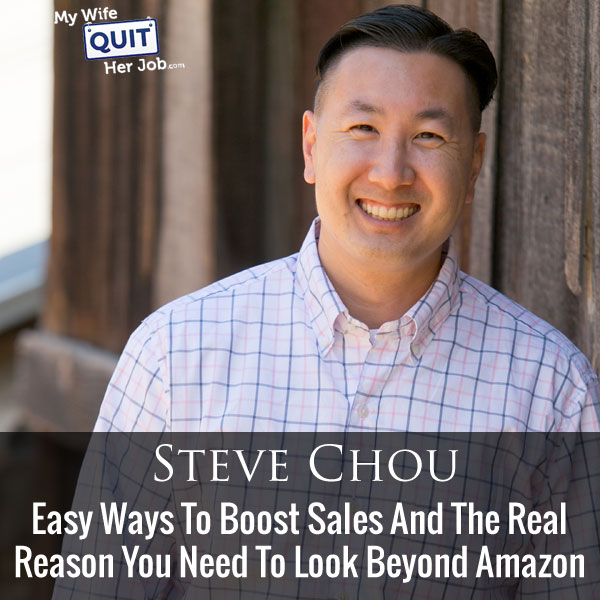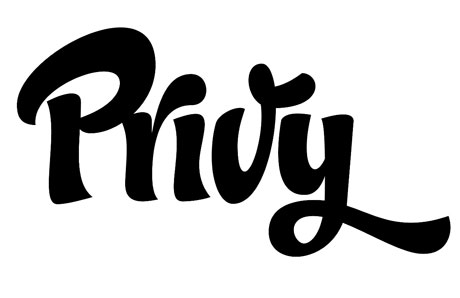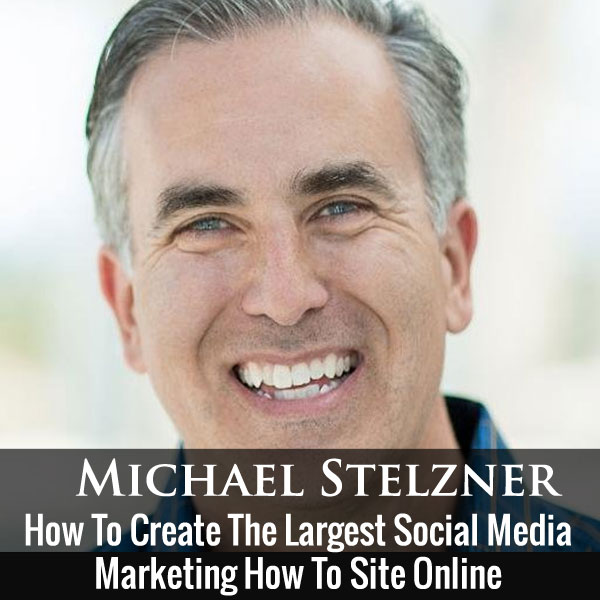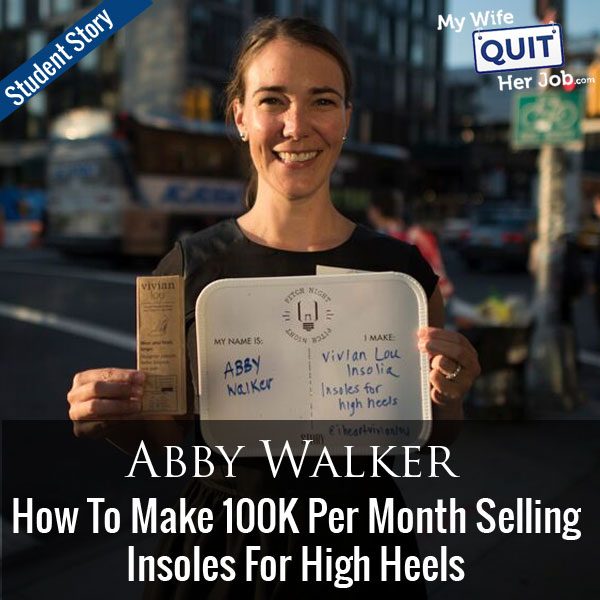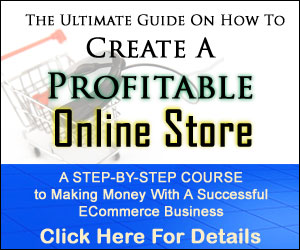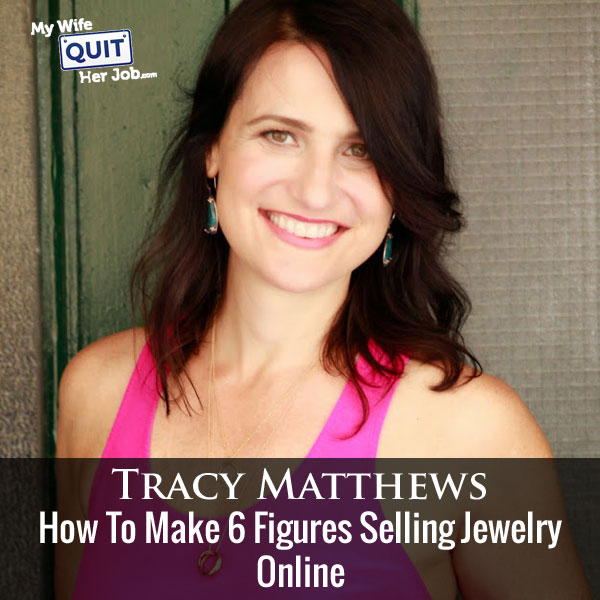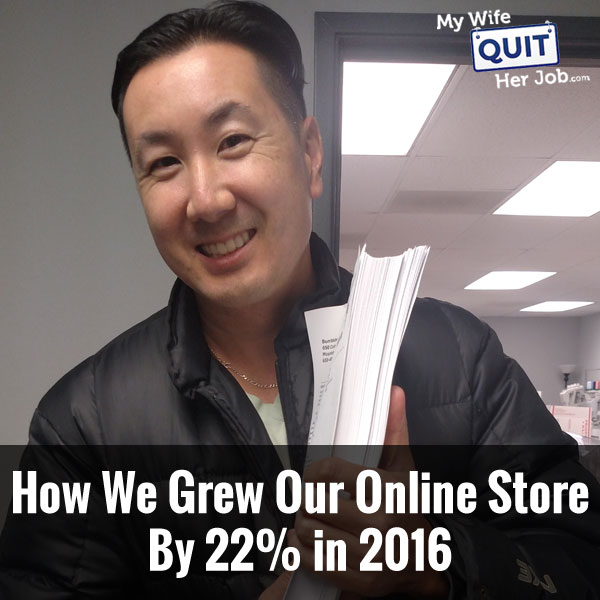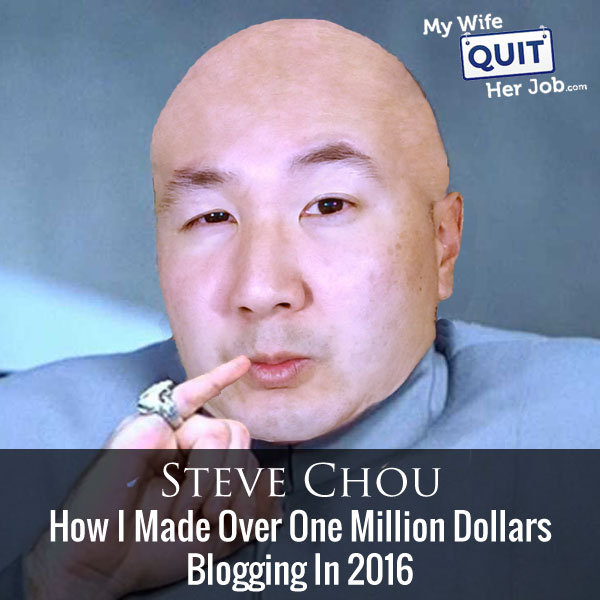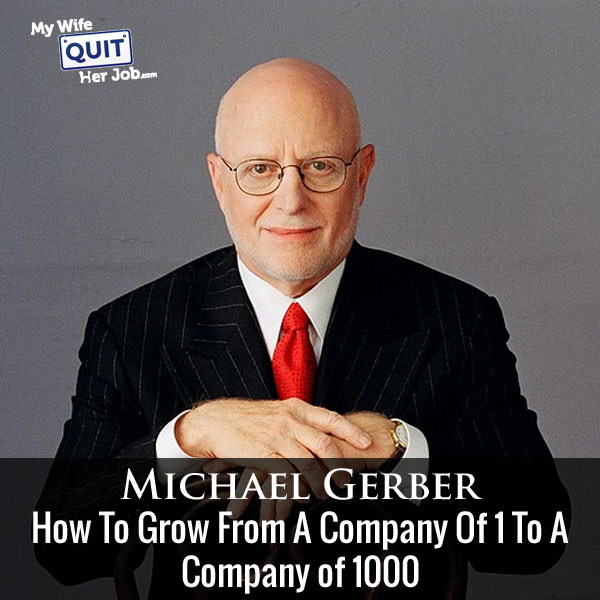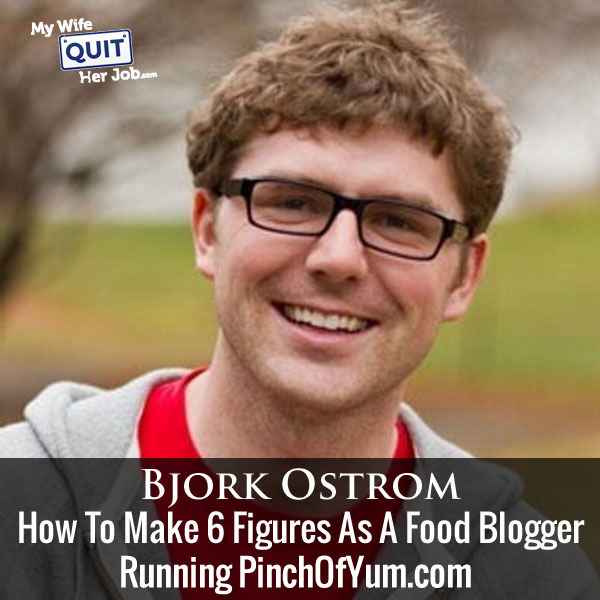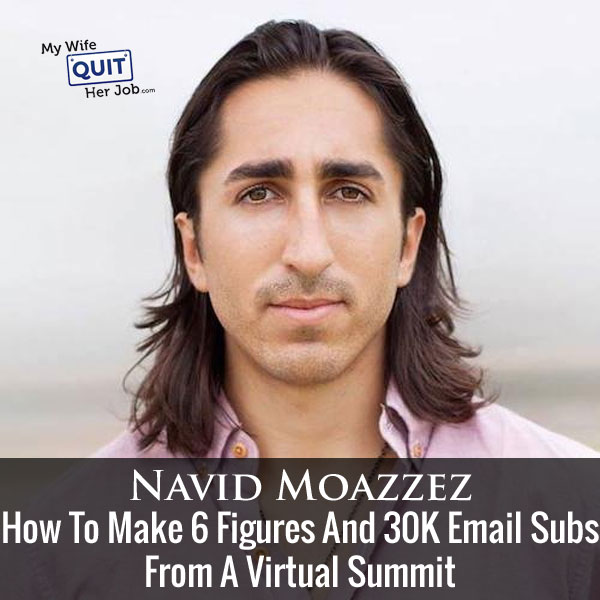Today, I’m excited to have the Neil Patel on the show. I’ve actually been following Neil for quite some time. In fact, I remember when I first discovered him back in 2008, I dropped him a comment on his main blog which was QuickSprout at the time.
In fact, just for fun I actually went back through my archives to check. I emailed him on September 19, 2008 about his post on 10 timeless business tips. And he replied in like 10 seconds, checked out my blog and actually gave me some tips.
Anyway, Neil is the founder of many multi million dollar companies like Crazy Egg, Hello Bar and Kissmetrics. He’s helped tons of companies like Amazon, NBC, HP etc.. Grow their revenue. He’s been doing this since he was 16 years old and he’s one of the foremost experts in online marketing.
Steve: Welcome to the My Wife Quit her Job Podcast, the place where I bring on successful bootstrapped business owners and delve deeply into what strategies are working and what strategies are not with their businesses. Now I’m Steve Chou, and today we are talking with Neil Patel the founder of Crazy Egg, Hello Bar, and Kissmetrics. Now in this episode you’ll learn the keys to running a successful ecommerce blog, and how to generate free traffic to your online businesses.
Now before we begin I want to give a shout out to sitelock.com for being a sponsor of the show, and as an ecommerce business owner your website is your business. But very few people protect their websites, and on average it takes 197 days for retailers to detect a data breach. Yes, that’s 197 days before you realize that your customer’s data has been stolen. Now you can prevent data breaches with SiteLock website security.
Now SiteLock offers a comprehensive suite of cloud based website security solutions for ecommerce businesses of all sizes and budgets. From malware scanning and removal to industry leading web application firewalls, SiteLock has you and your customers covered. So visit sitelock.com/mywifequitherjob for more information, and get your first three months free. Once again that’s sitelock.com/mywifequitherjob.
And if you want to learn how to start your own online business, be sure to sign up for my free six day mini course where I show you how my wife and I managed to make over 100K in profit in our first year of business. So go to mywifequitherjob.com, sign up right there on the front page, and I’ll send you the mini course right away via email. Now onto the show.
Intro: Welcome to the My Wife Quit Her Job Podcast. We will teach you how to create a business that suits your lifestyle, so you can spend more time with your family and focus on doing the things that you love. Here is your host, Steve Chou.
Steve: Welcome to the My Wife Quit Her Job podcast. Today I’m excited to have Neil Patel on the show. Now I have actually been following Neil for quite some time, and in fact I remember when I first discovered him back in 2008. I dropped him a comment on his main blog which was Quick Sprout at the time.
And just for fun actually I went back through my email archives to check, I mailed him on September 19th 2008 about his post on 10 timers business tips. And he actually replied in less than a minute, checked on my blog at the time and actually replied with some tips. Anyways Neil is the founder of many multimillion dollar companies like Crazy Egg, Hello Bar, and Kissmetrics.
He’s helped a ton of companies like Amazon, NBC, HP etcetera grow their revenue, and he’s been doing this since he was 16 years old. And he is one of the four most experts in online marketing. And with that welcome to the show Neil, how are you doing today man?
Neil: I’m doing good, how are you?
Steve: I am doing good. You know Neil you are really well known online, but before we kind of begin with the gist of the interview, I was just curious what your story was and how you got started with online marketing in the first place.
Neil: Sure, so think of it this way, back in the day I started a website. It was a job I would call Advice Monkey. And I thought when you pop up a website it naturally gets traffic; little did I know I was wrong, I learned that really quickly. I learned what SEO was, I paid a few companies, I got ripped off, got no results.
Through my frustration and from being broke I did not rest but to learn how to do marketing. And funny enough I got better at the marketing part than actually creating online business.
Steve: But you started Crazy Egg, right? Did Quick Sprout come first or did Crazy Egg?
Neil: Neither, Crazy Egg came before Quick Sprout I believe, but before that it was Advice Monkey then which doesn’t exist anymore. Then ACS which was ad agency that we owned, Crazy Egg came out of the ad agency.
Steve: Okay, I think that was the email address that you emailed me from actually, ACS something online or whatever?
Neil: ACSSEO.com.
Steve: Yeah, that’s the one, that’s the one, crazy, this is back in 2008, right?
Neil: Yeah, and the ad agency is no more ad agency, right.
Steve: So where do you focus your time now?
Neil: Honestly just emails, meetings, phone calls, blogging. My life is very boring, it’s just meetings and emails.
Steve: So no more — are you involved in those other companies anymore that you started?
Neil: I am, we have an awesome team that helps out. I do work for all of them, but you have to keep in mind like I’m answering emails for those companies, right? Like it’s really weird when someone would be like, hey we want to partner up? I’m like okay let’s jump on a call or it could be a sales [inaudible 00:04:38] like a big corporation might say, hey we have XYZ customers, we want to see if we can work out a deal with you or maybe, but it’s just my life revolves around my email inbox.
Steve: So it’s less dated A stuff more like strategic and then partnerships and deals, that sort of thing?
Neil: That’s correct yes.
Steve: Okay, and what were kind of some of the first set of experiences that set you off on this journey. Like why did you even start the advice site?
Neil: The Advice Monkey site?
Steve: Mm-hmm.
Neil: I was trying to find a job and I couldn’t find one. So I went, I created a job board because when I was browsing monster.com I realized they are publicly trading company making hundreds of millions of dollars. I’m like if I make 1% of what they make, I’ll be rich.
Steve: Okay, and then that kind of evolved into Crazy Egg, and then after you started Crazy Egg you decided that you wanted to teach others?
Neil: Well so we had — Advice Monkey failed miserably, got to marketing, started ad agency or internet marketing agency whatever you want to call it, started blogging at that point. I was using blogging because I didn’t have enough money to pay advertising like let me see I can generate customers through blogging. First blog was for an advertising, it was technically 100 top blog, did well, I got tired of blogging and marketing, created Quick Sprout which was on personal branding at the time.
And then I started writing again on marketing on Quick Sprout and I realized that I loved marketing, so it was like a full circle, I don’t why I gave up on product advertising. When I gave that blog away I literally just gave it away, it was getting over a hundred thousand unique visitors a month.
Steve: Crazy, so what is the goal with neilpatel.com then?
Neil: So Quick Sprout we are building a software that helps people with their online marketing initiatives and it tries automating everything. Not marketing automation like you are thinking like a Hubspot or Marketo, but more marketing automation like, oh we noticed these SEO errors boom, we just automatically fix them. Now the software won’t do all those kind of things at the beginning, but eventually we want to get there. And it will do that for all types of different marketing campaigns, social media, SEO, content marketing etcetera.
And the problem when you create companies from a blog, and it’s not attached to your name, eventually but sells or something happens I hope not, but if it does I won’t have a blog anymore, right? That’s mine. So creating neilpatel.com, and I should have used neilpatel.com first, but I didn’t own the domain name.
Steve: Really?
Neil: And eventually I was able to get the domain name. Now I’m trying to get patel.com, but the guy who wants to sell it, I offered 150 grand and…
Steve: That’s crazy.
Neil: He won’t sell it, and he does nothing with it.
Steve: So obviously neilpatel.com is not a site that you are ever going to sell, right?
Neil: Exactly, and that’s why I started the blog there. But with Neil Patel I do a lot more experiments. My latest experiment is international expansion to see how well it does and so far so good. I would say within the next two months I’ll get more traffic in Brazil than I will in United States.
Steve: So talk about with international expansion what do you mean? Specifically targeting other countries as opposed to the US?
Neil: Yeah, so I write content in English which is regarding the people who are online. I know people like oh more people speak mandarin etcetera, but you know why if you look at most of content published on the web it is in English.
Steve: That’s correct.
Neil: And when you think about the overall numbers, majority of the population doesn’t speak English as a primary language. So we started expanding into different languages. Right now we have Portuguese; we are going heavy into Spanish, heavy into German. We are slowly studying Italian, we are going into Arabic within the next 30 days, and we are also going to French in the next 30 days.
Steve: I assume this is not just like with Google translate; you are actually really translating it with humans, right?
Neil: I have a team of translators; I think we are like 55.
Steve: Crazy, okay.
Neil: We are cracking out roughly 250,000, 300,000 words per week.
Steve: That is nuts, okay. So Neil a lot of my listeners are in ecommerce, they sell physical products online. So I thought it would be interesting today to kind of get your perspective on how to get traffic and sales to an ecommerce store. And just to make this a little bit more difficult, let’s talk about this from the perspective of let’s say me starting an online store selling something very difficult like jewelry or t-shirt or something like that. What traffic sources would you personally experiment with at first, and what would be your main focus assuming that you have very limited resources?
Neil: Yeah, if it was me the first traffic source that I would go with is social media. So if I was selling like t-shirts, I would go and just try to get free shirts to people on Instagram, have them wear and post a picture and talk about my site. It’s branding, it does extremely well. If it was MVNT watches, movement watches, those guys I believe they are doing over $10 million in our Shopify store. They generate a ton of sales by getting people to just talk about it.
Steve: So watches, do they give those away as well? Like how would you — let’s say they are too expensive to give away.
Neil: But watches are affordable, their watches don’t cost a lot of money to make.
Steve: Okay.
Neil: But in general most ecommerce products if you look at unless you are selling TVs they are pretty affordable to give away, right? It’s like 5, 10 bucks; it’s cheaper than paying for ads. If someone has 500,000 followers, they post about it, that’s a pretty good deal. If you get that in quantity, it really adds up after all.
Steve: So you would go and you would reach out to bloggers and instagramers?
Neil: I have already yes.
Steve: And how does one do that on Instagram for example?
Neil: You direct message people.
Steve: Okay and how would you frame that reach out email or letter?
Neil: I would just say, hey I’m so and so with X, Y and Z Company; I love your Instagram profile and what you are doing. I want to see if we can send you a free t-shirt if you like, and feel free to post a picture of you in it.
Steve: Okay and with no obligation they — you give them the option of posting or not, right?
Neil: Yeah you talk to them like, oh I’d be interested what kind of t-shirt? If they just say okay what’s the address? I would say like hey this is what it is, do you think you’ll like it, would you be interested in posting about it. And I try to like dive into that deeper, because if they don’t ask any questions, they are just going take the free t-shirt and they won’t care to post about it.
Steve: I see, and what is the typical hit rate when you do something like this?
Neil: Typical hit rate…
Steve: Like what would be a good hit rate?
Neil: If you message out a hundred people you get 10 people you’re doing very well. Five on the low end, 15 on the high end.
Steve: Okay and let’s say some of these people do take these shirts and then they post on Instagram, you get a short burst, right? But eventually that dies down, right? Does that imply then you have to constantly be doing this or?
Neil: Well if you do it for six months straight you actually build up a big brand and then it becomes a trend.
Steve: Okay. So let’s say you don’t have the budget to be giving a whole bunch of these away, what would be your next thing that you might think about trying?
Neil: Sure I would look at SEO, SEO works. It’s long-term for ecommerce, but the strategy I would do is go and go find and use Atrust.com, see who links up to my competition and beg him for links.
Steve: So that implies that you are starting some sort of blog then for your ecommerce store?
Neil: that’s correct.
Steve: Okay because in a traditional ecommerce store it’s just products and categories and there is not a whole lot of content on there, right?
Neil: That’s correct.
Steve: Okay so every ecommerce store in your opinion should have some sort of blog even if it’s just physical products?
Neil: It makes it much more easy, but again you can get people to link back to you even if you don’t have like content, right? You can get people to link back to the actual stocks. You go to Atrust you’ll see everyone who links to your competition. And most of them don’t have products. I mean most don’t have content, because ecommerce sites very few people actually have blogs, so modeling the bigger guys do, smaller guys not so much.
Steve: Yeah so how do some of those guys get those back links, like what are some your strategies to build back links?
Neil: Yeah, let’s say you had a blog and you are linking out two, three ecommerce sites an article. I would be, hey Steve I notice you linked out to X, Y and Z ecommerce site, have you also checked our ABNC site? It covers this, this and the other that those other sites don’t cover. You should check it out, and I think you’ll just love it. If you like it yourself, you are free to link to it, cheers Neil.
It’s that simple. If you could get five out of every 100 emails that you send out to link back to you, you are doing a good job. With cold emails it’s not like Instagram where you can get a much higher ratio.
Steve: Interesting so you go through Atrust, find out which people are linking to the competitors, reach out to those guys and then post and ask them if they’ll update the post with your store?
Neil: That’s correct.
Steve: Interesting, and the hit rate you said like a good hit rate would be like 5% based on what you just said?
Neil: Yup, sheer numbers game.
Steve: Okay, so basically all these tactics are based on like good old leg work is what it sounds like.
Neil: That’s correct.
Steve: Okay, do you contract this stuff out when you do your outreach?
Neil: I used to, but I don’t even do the outreach anyone. It still works, it’s just I don’t really do much of the outreach.
Steve: Okay and in terms…
Neil: Also keep in mind that I’ve been around for so long that I’ve so many links I don’t even really need to have.
Steve: Yeah I know you don’t need to do it anymore. I was hoping that you could take it from the perspective of you having nothing though, you know what I’m saying?
Neil: Yeah, so for example I have a buddy named Tim. Tim sells financial products like ecommerce site, digital products like DVDs like physical DVDs, like he is mailing to you right, but it’s digital. And we do the same thing, we hire this guy and– what’s his name? Is it Anderson, he is a good guy. And he ends up charging $4 an hour, for roughly every 100 people that he emails he is getting around like 3.7 to link back. His English isn’t the best, but it’s not bad.
Steve: No way, okay and this is just random cold emails to people?
Neil: Yeah, but in quantity like sending out like thousands and thousands per week.
Steve: Okay, I was just — I get those like every day and I never read them, but I guess there is always going to be some people out there.
Neil: Yeah, how many people don’t know what you know?
Steve: I guess so, okay interesting.
Neil: Plus how many people are willing to link, it’s crazy.
Steve: Does it matter what quality of publication, like do you have some sort of filtering process?
Neil: No just a relevant site that doesn’t spammy.
Steve: Okay so it doesn’t matter, interesting. Let’s talk a little bit about the blogging aspect because I’ve read a whole bunch of your stuff about just content marketing, and you are definitely one of the experts out there.
How would you run a successful e-commerce store blog, because I see a bunch of e-commerce store blogs out there? All they do is they write about their deals and monthly reports, and I don’t really care about that stuff, so how would you structure yours?
Neil: My e-commerce blog?
Steve: Yes.
Neil: I would write on anything that is educational for people, like okay I know this is crazy and probably not the right thing, but this is what comes to my mind, because I was teaching my niece how to wipe her bum in my– we’re getting party drinks. I’m like, I don’t know if this is true, but there is probably a right way to use toilet paper wrongly, but you sell bathroom supplies, why not have a whole article on like how to make your toilet paper last longer.
That sounds crazy, but probably well, I seriously would, right. I know this sounds crazy, but it’s like educational, informational. It applies to almost every single person in the world other than babies.
Steve: When you come up with topics to blog about, is it very deliberate? For example do you do keyword research on a title before you blog about it, or do you just blog about something that you feel might be interesting without even taking that into consideration?
Neil: I just write anything that I think people will really love like that’s the deliberate part, and I make sure it is relevant to my business. Like think about the topic I just gave you, it sounds crazy right, would you agree with that?
Steve: It does, yes.
Neil: I bet it would go viral.
Steve: Interesting, so you’re going for virility as opposed to search?
Neil: Yes, because virility usually means it’s more relevant to people, I’m just helping them out. The other thing that I do for e-commerce I’m going for search traffic. I go to Quota, and I have taken all questions related to the products I’m selling, because then you see the most common ones sorted by votes, and then I write articles with those questions as a headline, and you find that you get a lot of search traffic after 6 to like months, maybe a year max, but it usually takes 6 months plus.
Steve: Interesting, so without building links you would find that these articles will just naturally rank?
Neil: Yeah because it’s really helpful, when people are typing questions and there is not enough good content that has answers.
Steve: You mentioned like you solicit for back links. Are you soliciting for back links to your store or to relevant posts, like you have to be selective, right?
Neil: Yeah, for team we just do it to the store.
Steve: To the store, the front page or category pages or…
Neil: It depends, if someone is linking to like people are selling financial products, then they’ll just link to his own page, but if someone is linking to training videos and they are selling a lot of them, and they have links to 5 other courses then you would be like, “Oh check out this course, it would be very valuable, here you go.” The cool part is one thing that we have seen that helps increase your ratio if you give him a discount code or a coupon code for their readers.
Steve: Do you, so this friend since we have been talking about him, does he have like a back end funnel as well for sales?
Neil: He does, yeah he has a whole sales team.
Steve: Okay, and so is the goal then to get them on this funnel, or is the goal for this just to get the sale right away typically?
Neil: A sale right away.
Steve: A sale right away, okay.
Neil: Yeah, because if they don’t get a sale then the back end funnel doesn’t work.
Steve: Since we are on the topic of links, what is your view of buying links these days, because I still notice like it seems pretty obvious to me like when I read an article on certain large publications that these links, it just seems a little suspicious to me, and so is that still going on and what is your view on that?
Neil: Yeah, with the buying links it’s still going on. It’s not as effective as it used to be. I’m not a fan, I think it is too short sighted, but people do it. I believe if you can create a good product or service, naturally others will just want to link to you.
Steve: Okay, and so back on that topic of what we were talking about with that blog post. I mean obviously the headlines are very important, right?
Neil: The headline is very important, yes.
Steve: What you just suggested had a really catchy headline, but it didn’t really take into account any SEO keywords, sorry or maybe it did, I don’t know, but do you try and mix the 2 like when you are trying to decide the title tag for example, what is your criteria?
Neil: Something that is appealing and it will get quixed [ph] because people love it. I don’t go for ranking on equipment title types.
Steve: So you don’t purposely try to incorporate search terms I guess?
Neil: Eventually yes, once they start ranking, then I will go on to Google search console, you choose your e-commerce site. Once you click on your profile, you click on searching the navigation, then search analytics which is also on the left navigation. If you want to check 3 boxes, clicks, impressions, position, and the default things that they show you is the keywords, then how many clicks you are getting for how many impressions, and your position.
You want to look for a position 5 or lower, better than 10, and you want to look for a low click through rate. A click through because they also have a CTR box, you can check that as well. I look for a CTR box, CTR ratio, that’s below like 3 or 4%.
Now what you want to do is make sure when you adjust these title tags, those keywords in that title tag, it’s really appealing where people want to click on it, and it’s short and to the point roughly 6 words. So when you do that your rankings will start going up, because your click through rate is higher.
If you can increase your click through rate higher than the person above you, what does it tell Google? It’s hey everyone is clicking on the number 6 result, instead on the 5th result. Well, oh, maybe we should put number 6 before 5, right, that’s what happens all the time.
Steve: going back a little bit, you mentioned that your title should have 6 words in it?
Neil: We roughly do 6 words titles. We found that it gets more clicks, I don’t know why, but that’s from the data we analyzed. It can have more or less, but you don’t want to have like 20 words in there.
Steve: Interesting, can you give me an example of one of your best articles that’s 6 words in the headline?
Neil: Let’s see, they are not always right, but okay one is on quicksprout.com, the beginner’s guide to online marketing, links number one for online marketing in the US, and in different regions. I think Dublin I’m number one as well, Canada I think I’m number one too.
Steve: 6 words just doesn’t seem like a lot, but this is based on the data that you have gathered for your sites, right?
Neil: Yeah, I’m not saying don’t do more. You can do like 7, 8 it’s not a big deal, it doesn’t affect that much Google, 6 is just a general rule of thumb. You don’t want to go 10 because if you start going too many it is going to get cut off, so somebody is going to read your title tag and they won’t be able to see it all.
Steve: So once you post your article, is there anything special that you do to promote it?
Neil: What we do is we go to search.twitter.com, or technically we go to basumo.com.
Steve: Basumo, okay.
Neil: Type in the keywords relevant to our space in that article, see the most popular ones, then we click view shares on Basumo, and this is if you have a paid account, it shows you all the people who clicked out. If you don’t have a paid account, take that URL; go to search.twitter.com, put in that URL for free. They show you all the people that tweeted it out, reach out to them, and letting them know that, “Hey I noticed you tweeted out X, Y and Z article, other similar one coming out, let me know if you want to check it out.”
Then a lot of people will say yes, and then they will share it. If you get like 15-30% of the people tweeting it out, you are doing all right. For me I’m averaging somewhere in the 27, it is above 25%, it is below 30%, a ratio of people who tweet it out from the people that you know.
Steve: Do you think people are tweeting it out because you are you?
Neil: That’s why I’m saying I have ratio for getting above 15, it works well, but I have done it with people I have known in the industry.
Steve: What do they get?
Neil: Usually under 20%, but above 15.
Steve: Interesting, so when you put out a publication or an article, do you have any criteria for it in terms of comprehensiveness, in terms of length and that sort of thing to encourage people to tweet it?
Neil: At least 2000 words which means that is a thorough article, actionable with insights. You have an intro, you have a body with headings, sub headings, you have a conclusion. That makes it easier for people to scheme it without reading it, attractive headline. 8 out of 10 people will read your headline, only 2 out of 10 will read the rest of the article, so we try to make the headline really appealing.
Once we do that we go out there, reach out to people and try to get them to share. We also look at the space, like we go to Basumo before hand, before we are writing which is being as we want to know everyone who’s written an article that has done well, and we make sure our article is more thorough, and better, and higher in quality.
Steve: Okay, and so that encourages sharing?
Neil: That’s correct.
Steve: Okay, so really there is a lot of pieces to this, right?
Neil: Yeah people don’t want to share crap, would you?
Steve: No, absolutely not. In fact if I got a solicitation to tweet something, I almost never do actually which is why I’m asking.
Neil: Yeah, but you are not the average person, most people don’t mind. If you tweet our article that says 10 ways to greater e-commerce sales, and I email you and saying, “Hey I have another article called a 101 ways to greater e-commerce sales, would you be interested in checking it out?’
Steve: I want to take a moment to thank ReferralCandy for being a sponsor of the show. Now in this day and age word of mouth is a huge driver of business for most e-commerce stores, and the best way to amplify word of mouth marketing is through a referral program, and this is where ReferralCandy shines.
With just a couple of clicks of the mouse you can add a referral program to your e-commerce store, and reward your customers for telling their friends about your shop, and this tactic works wonders. In fact it is not uncommon to get a ridiculous return on investment.
For example Greats Footwear who is a ReferralCandy customer is currently seeing a 20X ROI. Referral word mouth marketing is also useful for building up your social media presence as well, because everyone is talking about your company with their friends on Facebook, and Twitter.
The best part is that ReferralCandy is a set it and forget it service, requires no technical set up, and they are giving My Wife Quit Her Job listeners 50 bucks to try them out if you go to promo.referralcandy.com/Steve. Once again it’s promo.referralcandy.com/Steve to get a $50 credit to try out the service risk free, now back to the show.
I will definitely check it out, but if I didn’t know who the person was, my suspicious radar always goes off.
Neil: Okay, but if you don’t know who the person was and you checked it out, and it was really thorough and amazing, would you tweet it out?
Steve: I would probably tweet it because that is a low barrier, right. I would be a little more hesitant to share it on my Facebook.
Neil: Exactly, that’s why we ask for the tweet.
Steve: I see, okay so you are just asking for tweets.
Neil: Yeah, never ask for the shares. It is too hard to get the share.
Steve: Okay that covers tweets, but do tweets get a lot of traffic for your stuff?
Neil: It does.
Steve: Interesting.
Neil: I think for the last 30 days, July I was like 30 something thousand visitors from Twitter.
Steve: What is your greatest source of traffic?
Neil: Google then Facebook.
Steve: Google just SEO organic?
Neil: Aha.
Steve: Okay, and so for the Facebook traffic …
Neil: Google, email, then Facebook, then Twitter.
Steve: For the Facebook stuff that implies people are sharing your stuff on there, right?
Neil: I also have a proper Facebook page, I have like 300,000 plus fans.
Steve: Okay, there is so many ways you can go with this, so the Facebook page, how did you build it up to so many fans over the years?
Neil: I have a strong brand, I don’t think it’s that easy to replicate, but the real reason my Facebook fan page does really well is because the brand speaking of competence, and then I do a ton of paid advertising on Facebook. I probably spend like 50 or 60 grand to build up the fan page.
I have high engagement, like people look at some of my posts, like oh it gets like 50 shares or 100, 200 shares, some of them get post scale like 3, 4, 500 shares. Images sometimes can get well over a 1000, but what they don’t notice is I have fans in different regions.
For example I have over 100,000 fans in Brazil, you yourself will never see it because you probably don’t speak Portuguese, so posts in Portuguese are only seen by people in Brazil, posts from an English blog are only seen by people who speak English, so my fan page is segmented out. My Portuguese posts tend to get more engaged with my English posts, like more likes, more shares, and more comments.
Steve: Interesting, in terms of actual revenue though, do you find that you are making proportionally more money from your Portuguese people?
Neil: No, by far I’m making more money in English, but it’s adding up. I would say within, it’s going to take a while, but I would say within 2 and a half to 3 years the Portuguese blog will generate more value than the English version.
Steve: For your fan page, are you just posting your own stuff, or do you just post any article that you might find interesting?
Neil: Own stuff or shit about me, it’s one or the other, like in one of my interview I did on Chris [inaudible 00:28:35].com, amazing guy, I loved the interview I did with him. I also love the content that he has on his blog, he is a good chill guy, I shared it. It got him extra 120 likes, 11 shares, and 20,000 people reach. It wasn’t bad at all, it was pretty good.
Steve: No, that’s pretty good
Neil: Especially because Facebook kept screwing up their algorithm. Before they did this I was getting like 200 plus likes.
Steve: Yeah, they keep downing it down lower and lower, so you got to pay for it, right?
Neil: Yeah, and I don’t want to pay for it because paying for likes is like come on Facebook.
Steve: Are you still paying for likes, or do you actually just boost articles or whatever and then get the likes from there?
Neil: No I really pay for likes, I don’t like boosting articles.
Steve: Interesting, so what is the rationale for doing that as opposed to posts?
Neil: I don’t like paying per play, I like paying to build up platform or audience that you can keep leveraging, because if you run out of money at least you can keep going back to the same well.
Steve: Even if that well is constantly getting lower and lower percentage of visibility?
Neil: That’s correct, yes because if you look at the algorithm, the articles that are really good, they still get a ton of play. Even if they reduce the visibility, if something was supposed to go viral, it’s still going viral, and it’s still getting a ton of natural likes and shares.
Steve: Interesting, how much do you pay per like if I might ask?
Neil: Which region?
Steve: Let’s do US because that’s where most of the listeners are.
Neil: A dollar per like, I usually don’t do much advertising in the US though.
Steve: I see.
Neil: Unless in the B to B category. Brazil I’m paying on for a really good like around 11 cents, a shitty like around 3 cents. I don’t optimize for numbers, I would like to optimize for engagement. How can you get the least amount of likes and get the most comments, likes on your shares or on your personal shares, because it increases your idling scores which is their algorithm. If you have less fans but you have way more engagement, it’s much more likely to go viral and for Facebook to show it to other people.
Steve: Interesting okay, so buying likes a dollar per likes sounds really expensive. So that’s probably why you don’t do it.
Neil: B to B category yes, but keep in mind some of my customers are worth over a million bucks [inaudible 00:30:40] on B to B, B to C probably not.
Steve: Right okay, so we talked a little bit about ranking a store in search. Are there any things that you care to talk about in terms of what is working, in terms of search engine optimization today?
Neil: The biggest thing that’s working in search engine optimization today is brand building. People don’t go and say, I want to buy this for like protein powder or making a program as an example.
Steve: Sure.
Neil: A lot of times they just go to Amazon and they type in protein powder.
Steve: Yeah.
Neil: And if you notice the companies with the strongest brands, they’ll just kidnap you the most back links, not just the most talked about the most but they are also ranked highly why? Because when people are searching for stuff and they see Amazon and Google search, they click on Amazon list and view the pack if they know it’s Amazon.
Yeah you are not going to create a stronger brand as Amazon, it’s really hard, but you can still create a strong brand within your space, like the reason neilpatel.com ranks so well, I have a strong brand. 18,000 plus people a month click on neilpatel.com by googling my name each month. That’s how many people search, that’s how many people click, right? That’s pretty good for a personal brand.
Steve: No it’s excellent. So when it comes to — since you mention Amazon, when it comes to Amazon versus your own store what would be your strategy there for trying to stand out. Like have your listing stand out over Amazon? Because obviously you make more money if someone buys directly on your site.
Neil: It’s hard. My buddy has a [inaudible 00:32:21] supplements. He was telling me how he keeps making more money; we were going over his numbers yesterday. His Amazon numbers and he is on ecommerce site. He is like damn it, like Amazon is growing faster than a normal site, yeah it should be.
And he is like why do you think so? I’m like dude the other day I was buying your green powder. They had this vegetable powder that it’s like really help you, you put in water. And he is like, oh you bought it? I’m like yeah I bought it from Amazon; I found it on your site.
And he is like, why don’t you buy it from my site? I’m like oh Amazon has prime shipping. And he is just like you really go to Amazon to buy; I’m like yeah I do it for everything. And he is just like — he started laughing. He is like I actually do the same thing too when I find — I go to Amazon to buy, I’m like that’s the problem, that’s consumer behavior in ecommerce.
Steve: So does that imply then that you would focus most of your efforts on Amazon then if you are an ecommerce guy?
Neil: I would do both, but I would actually focus more on Amazon than my own site, but I would do both. I would probably do like 60% Amazon, 40% focus on my own site.
Steve: Interesting. Just to chase the money now I guess the cash flow money, I don’t know I just seem — I feel like Amazon, they keep changing the rules and it’s kind of like a slippery slope, you know what I mean?
Neil: Not necess– yes but that’s with everything, Google does the same thing, Facebook does the same thing, you have to adapt as a business. The beautiful part about them changing the rules is it eliminates competition too. So the way I see it is if you can build up your own site and your own audience you can use that for Amazon.
When I was talking to my buddy, I’m not going to name his site. It could be [inaudible 00:33:53] it could be someone else; it could be the financial guy. But when they sell stuff on Amazon and they got a ton of bad reviews because people are screwing up their listing, they just do an email blast, and they are usually– it’s like look some people are giving us bad reviews, here are the best ones, upload them, right?
Steve: Sure.
Neil: And it helps like people like him would do better on Amazon because they are doing both, because they are able to leverage their website audience for Amazon as well.
Steve: So I have talked to a couple of other guys who sell mostly on Amazon, and what they do is they take their email list and they blast out for people to go buy their products on Amazon as opposed to their own site. How would you feel about that if you were running things?
Neil: I wouldn’t mind with that, I’ve tested it and I have found that it converts better on Amazon. The other thing that we used to do is when you do the Amazon, we would put in their like you score on Amazon. You search for a keyword that relates to your product, then you scroll all the way down to find your product. Click on it and then when you do the email blast and when people buy, your ranking will sky rocket. They’ve changed it, well it doesn’t work anymore, but that worked really well.
Steve: Yeah that used to work in the past, I think they don’t count that anymore. But you can tell someone to go on Amazon, do a search and then click on your product and then buy it, and that still works.
Neil: Yeah but it doesn’t convert as well, because it’s hard to get people to do that.
Steve: Interesting, so you would probably focus more on Amazon sales as opposed to your own site?
Neil: That’s correct.
Steve: Okay and then in the long-term there is no repercussions for doing that?
Neil: Not that I know.
Steve: Okay, that’s interesting.
Neil: All the businesses I have, I know companies who do $60 million a year in ecommerce sales, and they focus more on Amazon than their own ecommerce site, and they are still doing well, big companies.
Steve: And in terms of PPC what would you use?
Neil: I would use Google AdWords, I would use some Facebook ads, Facebook ads would be number three. Google AdWords and Google shopping or shopping bids number one, handling it all together. Number two is Amazon paid ads. Number three would be Facebook.
Steve: Okay and in terms of Facebook ads, so let’s say for Google let’s say we are selling t-shirts or something. That in general is not conducive to an AdWords ad because the keywords are really competitive, right? So how do you kind of structure your campaigns for that example?
Neil: Wait for AdWord ads or you are saying–
Steve: AdWords yeah no, not shopping but just AdWord ads.
Neil: Yeah people typing in if I’m selling computers like a specific type of laptop, I’ll just hit on them and send it to my site.
Steve: Yes but those keywords will tend to be extremely expensive, right?
Neil: Yeah but landing pages are optimized for conversions, you are fine. And you can use sites like [inaudible 00:36:41] I think it’s called that. And it shows you like other ecommerce case studies, and it talks about people improving their conversions, stuff like you do all that stuff then you should get good results.
Steve: So it’s your belief that if you run your campaigns effectively you can make AdWords work for any demographic or any type of products?
Neil: Almost yes.
Steve: Interesting okay. And in terms of your Facebook ads actually when you run for ecommerce, what is your strategy there? Is it for the sale or is it to get them on some sort of funnel?
Neil: No, I first send people to our landing page that breaks down the case study of like what people use the product for, where they did from, and true one not a fake one that people make up.
Steve: Okay.
Neil: Then from there I get them to click through to like our Amazon page where they can buy.
Steve: Okay, and do you entice them with coupons or anything like that?
Neil: No.
Steve: No, okay.
Neil: I hate doing coupons.
Steve: And there are no email signups or anything like that?
Neil: Email signups on the landing page upon exit where they are scrolling away, you capture email.
Steve: Okay cool man, it’s really good to hear this from someone who has just interacted with so many different businesses like all across the board, right? I mean you’ve dabbled with ecommerce businesses, software business all across the board. So I want to switch gears a little bit, I want to talk about your book actually.
Neil: All right.
Steve: What is it called and what’s it going to be about?
Neil: It’s going to be called Hustle, and think of it this way, right now in this day and age everyone feels it’s harder to just succeed. The rich are getting richer, and the people who are the haves are getting everything; the have nots are getting nothing. Would you agree with that?
Steve: Yeah definitely.
Neil: Okay, and what we found is that’s not necessarily the case. I’ve done okay, I’m not saying I’m the richest person, but what did I come with, I was an immigrant. There are still a lot of entrepreneurs these days that are succeeding that have little to nothing to show when they first start. I didn’t have the best education either, and the commonality is when you look at a lot of these things it’s the actions that they take to succeed. In essence we are calling it a hustle.
How can you — well you have to go from point A to point Z, let’s assume Z is success. And it doesn’t have to be financial success I won’t believe you have to go through A, B, C, D and those all these steps. Not necessarily, you can succeed and there is many different ways.
I’m going to give you example of this. In the book we talk about making your own luck. And one of my co-authors, his name is Patrick. His son was Shane was in this like little creek, and they were looking for fish. Patrick looks down and he is like, oh Shane buddy, let’s go home, there is no fish in there.
Shane looks at his dad; he doesn’t say anything, he jumps into the little creek and start shuffling his feet. In essence he manufactured his own luck, and you know what happened when he shuffled his own feet? All these fish started popping up, and he is like oh daddy, look, look at all the fish. We are teaching people you can manufacture your own luck. People aren’t taking the actions to get the results.
Steve: I think this actually ties in well with this podcast interview because a lot of the strategies that you outlined were hustle based, right?
Neil: Yes…
Steve: Doing outreach for back links, doing outreach for tweets and shares, that sort of thing?
Neil: Yeah everyone was telling me, “Neil how do you start an agency and make money?” I was like, “Oh I called Collins. I’m like yeah I called every single person, I was spending a lot on pay per click, just typing random keywords, just Google the most expensive pay per click keywords, then you just go down the list, you Google for it.
Look at people on page 2, and 3 for the paid ads, not on page one, and you just call each and every single person up.” I was calling and be like, “Hey you want more traffic. If I get you results pay me, if I don’t, don’t pay me.” Everyone is like, “You are crazy.” I’m like, “I landed some contracts, they’ll pay me 15 grand a month when I was 16 years old from that. I was just cold calling.”
They are like, “What do you do by your age or any of this,” well objections you hear. I’m like, “I just speak to the phone, I never told anyone my age. I just called. I’m like people think things through too much and they are not willing to take action. You know what it worked, and after that once I started cold calling the business started growing a bit more, and we started building a brand getting inbound increase, I was like, “I want bigger companies.”
I would just go find everyone who is venture funded, these days it’s easier because you can go to Crunchbase, and I would go through all the results of the people recently funded, and I would email out the VC who recently funded them, and I would break down everything that they are doing to screw up their marketing, and I would just give it to him for free in a pedia.
You know what a lot of those people do, they are adventure guy, and then they are just like bored and they would be like, “Hey you should hire this guy, he seems pretty smart.” I got a lot of contracts that’s way.
Steve: Yeah, I don’t want to get into this whole millennial debate because I feel the same way like people just assume that they are entitled to get things without doing the hustle, and without doing the leg work, because I run a class of e-commerce students. They put up the site and they expect sales to come right away, but in the beginning I remember for myself, my online store, I was on the forms pretending to be a woman trying to get people to come back to my site to buy my handkerchiefs, and so a lot of that early work early on is what allowed us to gradually grow.
Neil: Yes, but you know what, you are scrappy, and most people just aren’t willing to put in the effort, but that’s the whole point that we are trying to make out of the book. We are not just trying to say these crappy book going through all the cons, and teaching you how to do exactly what you are doing while I’m doing, and what other people are doing to succeed, because I don’t care if you are rich or poor, you believe you are book smart or you are not, you can succeed if you put in the effort. Yeah you may not be a billionaire, or you may not even be a millionaire, but you will be better off than where you are right now if you use these tactics.
Steve: How do you convince someone to hustle?
Neil: You can’t convince them, they have it in them. They want to have to succeed; they want to have to do better.
Steve: As part of your book is it mostly case studies then, like how are you going to get these people to…
Neil: I want to say case studies, it breaks down like concepts. For example one of the things we break down in the book is how to find your passion. Most people don’t want do anything or hustle or put in the effort, because they don’t know what they want to do in life. We talk about how to find your true passion in life. Most people believe it’s oh I’m born, and I’m growing up, and I know as a kid I wanted to be an astronaut, so that’s what I’m going to be.
When you find out when you are older, what you wanted to be as a kid usually isn’t the same thing, like when you were a little kid, what did you want to be? I’m pretty sure it wasn’t related to selling stuff on the e-commerce or on the internet.
Steve: Absolutely.
Neil: You wanted to be like a doctor, a lawyer or something or…
Steve: Engineer.
Neil: Engineer, all right. I actually wanted to do one too; I also wanted to be doctor.
Steve: Of course, you are Indian.
Neil: There you go, and you are selling stuff on the web, but you know what most people think like, “Oh everyone just knows what they want to do. It doesn’t matter what your age is, you don’t just know what you want to do as you are older.” But as you try things you learn what you don’t want to do and you figure out what you are passion about, and eventually it leads you down the road of this is what I want to do in life. That’s what we teach you in the book, it’s like a trial and error, and we break down the whole process of this is how you figure out what you like and why.
Steve: Cool man, so just backtracking now a little bit, let’s say someone is out there who wants to start a business because they don’t like their job, what is– if you could sum everything up, what would be the best piece of advice for them, that you could give right now.
Neil: Well just do it, go find something you love, go find a problem that you can solve related to what you love, and from that point go and just do it. You may have a lot of questions, how do I start up a business, how do I do this? Figure out on your own. The reason I say that is if you can’t figure out those basic things, you won’t figure out how to succeed because starting up is the easiest part.
Steve: Do you believe that if you are passionate about something you can find some way to monetize it?
Neil: No, not always, because some things are not monitizable and some things shouldn’t be monitizable. I’m also like a hippy in certain ways like it’s almost passion about cancer research, and they figured how to solve cancer, yeah it’s monitizable, but should they monetize it? Hopefully not.
Steve: Okay, and so it does require a certain amount of research.
Neil: Yeah like it does because– what’s a good example of this? If you can create videos and tutorials on how to be a really good knitter okay, yeah you can try to make money selling knitting products, but you can go to YouTube and find so many stuff for free, how can I do it too well?
Steve: But you could probably tie that into some sort of physical product play.
Neil: You can, and that’s a bad example, but the point I’m getting is you are not going to make a lot from that.
Steve: Sure, sure, okay cool man well we have been chatting for 40 minutes, I want to be respectful of your time since you are a busy man. Where can they find you, when is the book coming out, and what conferences are you going be at?
Neil: I believe the book is coming out September 13th, I could be wrong on the date, but I believe it is around 13th. They can find me at neilpatel.com, the next conference I’m at is [inaudible 00:45:54] in Brazil.
Steve: In Brazil? Cool.
Neil: Well because I do it international.
Steve: Really, are you going to be speaking Portuguese or?
Neil: No, it’s funny, last time I was there speaking which was technically a week ago, last week, yeah some week ago I was in Brazil, and I started my speech, and I’m like I was telling them how I love Brazil. I started in Portuguese which I forgot how to say now, and I told them I was going to do my lecture in Portuguese, and they are all excited, and I’m Like, “Just kidding.” But there is always translators there, and so everyone is wearing headphones.
Steve: Oh interesting, okay so they don’t understand you, so someone else is translating on the fly, interesting.
Neil: Yeah because most of conferences that I speak at are international, and almost in all of them there is translators there.
Steve: Actually why is that by the way?
Neil: Like for me it helps me learn more. I know the US market really well. When you go see other random countries that you have never been to, you see the culture, how people interact, how they buy online, the way their society works, and it’s just refreshing and you actually learn a lot, the world doesn’t revolve around the US.
US is a great country, I love it to death, and the opportunities we have. Even our government people complain about it, but if you go to a lot of different regions, it’s hard to set up a business in certain countries, like the US is very pro, entrepreneurship and business. They are helpful in many ways, but you just learn a lot, like culturally on how different things work, and you realize that there are so many opportunities overseas that no one is speaking about.
Steve: Let me ask you this question to close this interview, you are a successful guy, you probably have more money than you know what to do with, so what is your goal from here on out, like what are your projects that you are going to take part in?
Neil: I will start farming, help others out, and that’s really it. I don’t really have an objectives like I got to do this, I got to do that. I just really enjoy blogging, and helping people out. Like when I get an email from a mom who is running a bed and breakfast and cheese, it’s like, “My son had to work at Home Depot, because we couldn’t afford to send him to college and they didn’t want to do loans.
And she’s like now by reading your stuff, my bed and breakfast is like packed all the time. He was able to quit his job, and I was able to send him to college.” That makes me happy. Is she a rich millionaire? No, but impacting that one person’s life for me it’s satisfying.
Steve: I totally know how you feel, yeah after running the class and the blog too, I can totally relate.
Neil: Yeah, it’s an amazing feeling; it’s not about the money. I’m giving away bonuses when people buy my book right now, and I get people even like oh we can’t afford, I’m like, “Here is the bonuses for free.” When they respond back they are like, “Thank you, this has helped change my life.” I’m just happy, I know this sounds crazy, but it’s not about the money, it’s just about helping others.
Steve: Cool man, hey Neil thanks a lot for coming on the show, really appreciate it.
Neil: Thanks for having me.
Steve: All right take care.
Hope you enjoyed that episode. I’ve actually been a huge fan of Neil for a very long time, and I was thrilled to finally get him on the podcast. The man knows what he is doing, and you have to go and check out some of his monster guides that he has written online.
For more information about this episode, go to mywifequitherjob.com/episode 137. Once again I want to thank sitelock.com for sponsoring this episode. Now if you have an e-commerce store, go there right now, and find out how long it takes to load. Does it take more than 5 seconds, and if so did you know that 60% of consumers only wait up to 5 seconds before bouncing from a site, and never making a purchase.
Did you know that at least 68% of shoppers do not return to poorly performing websites? These are huge percentages, and they mean lost revenue and reputation damage for your business. Now with SiteLock Truespeed is state of the art global content delivery network. They can improve your website speed by up to 50%, and reduce bandwidth usage by up to 40 to 70%. For more details on how you can speed up your website, visit sitelock.com/mywifequitherjob, and get your first 3 months free. Once again that’s sitelock.com/mywifequitherjob.
Once again if you are interested in starting your own online business head on over to mywifequitherjob.com and sign up for my free six day mini course on how to start a profitable online store. Sign up right there on the front page, and I’ll send you the course via email immediately. Thanks for listening
Outro: Thanks for listening to the My Wife Quit Her Job Podcast, where we are giving the courage people need to start their own online business. For more information visit Steve’s blog at www.mywifequitherjob.com.



